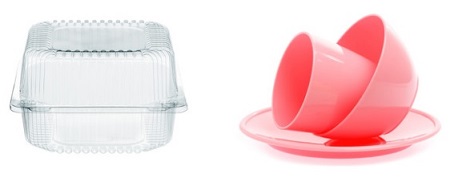정의
Polyethylene is a flexible waxy translucentpolyalkene thermoplastic made in avariety of ways producing a polymerof varying characteristics. In the ICIprocess, ethene containing a trace of oxygen is subjected to a pressure inexcess of 1500 atmospheres and atemperature of 200°C. Low-densitypolyethene (r.d. 0.92) has a formulaweight between 50 000 and 300 000,softening at a temperature around110°C, while the high-density polythene(r.d. 0.945–0.96) has a formulaweight up to 3 000 000, softeningaround 130°C. The low-density polymeris less crystalline, being more atactic.Polyethene is used as aninsulator; it is acid resistant and iseasily moulded and blown.
Polyethylene is a water-repellent, white, tough, leathery, thermoplastic resin very similar in appearance to paraffin wax. Properties vary from a viscous liquid at low molecular weights to a hard waxlike substance at high molecular weights. It is used as a coating for glass bottles and fiberglass fabrics (special treatments for glass are required to obtain good adhesion between polyethylene and glass) and is also used as an injection-molding material for ceramics.
In the polymerization process, the double bond connecting the carbon atoms is broken. Under the right conditions, these bonds reform with other ethylene molecules to form long molecular chains. Ethylene copolymers, EVA, and EEA are made by the polymerization of ethylene units with randomly distributed comonomer groups, such as vinyl acetate (VA) and ethyl acrylate (EA).
생산 방법
Linear PE is produced by a low-pressure solution or gasphase process that is initiated by a variety of transition metal catalysts. The most common catalysts are Ziegler titanium compounds with aluminum alkyls and Phillips chromium oxide-based catalysts. The gas-phase and slurry processes are used to produce high molecular weight, high-density (HMW-HDPE) products. The highest density linear PEs can be made from an α-olefin comonomer, typically octene for the solution process and butene or hexene for the gas-phase process. Linear PE does not have long-chain branches and is therefore more crystalline. The short-chain branches found in linear PE serve as tie molecules, which give the higher α -olefin copolymers improved puncture and tear properties. Included in the linear PE family are ultra-low-density PE (ULDPE), LLDPE, and HDPE.
HDPE’s main use is in blow-molded products such as milk bottles, packaging containers, drums, car fuel tanks, toys, and houseware. Film and sheet are widely used in wrappings, refuse sacks, carrier bags, and industrial liners. Injection molding products include crates, pallets, packaging containers, houseware, and toys. Extrusion grades are used in pipes, conduit, wire coating, and cable insulation.
LLDPE is a thermoplastic that in many applications replaces its predecessor, low-density polyethylene (LDPE), or is used in blends with LDPE. In particular, LDPE’s shortchain branching gives it higher tensile strength, puncture, and anti-tear properties, making it especially suitable for film applications.

